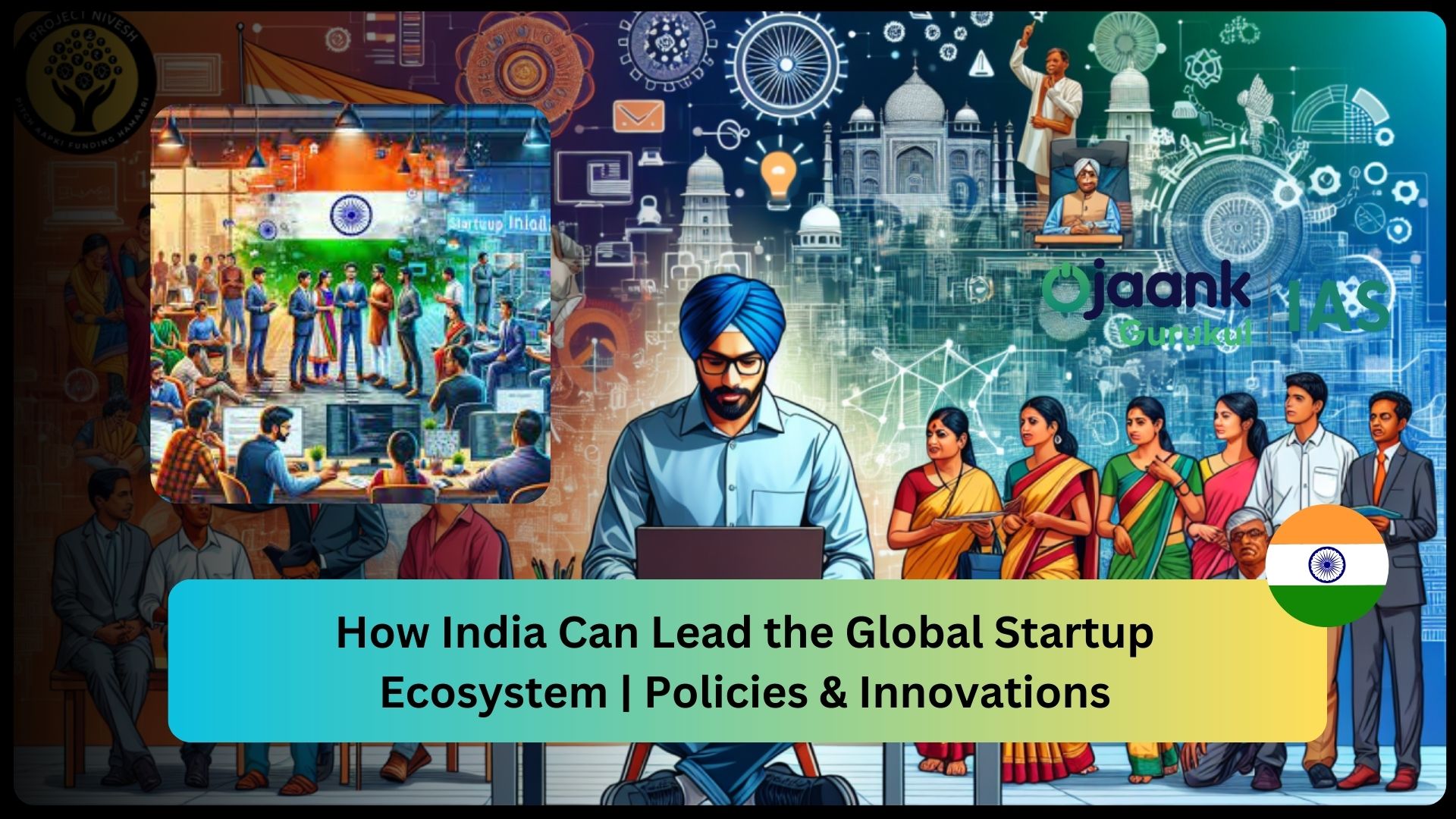How India Can Lead the Global Startup Ecosystem | Policies & Innovations

India’s Startup Boom: A Remarkable Journey
India’s startup ecosystem has transformed remarkably over the past decade. Growing from just 400 recognized startups in 2015 to over 1,30,000 in 2024, the country has become the world’s third-largest hub for innovation.
During this period, startup funding grew 15-fold, while the number of investors increased nine times. This explosive growth is backed by India’s robust digital public infrastructure, enabling startups to address challenges such as financial inclusion, climate change, and agricultural productivity.
The Government’s Role: Policies Fueling Innovation
Progressive policies have been pivotal in fostering India’s startup culture. Initiatives like the National Quantum Mission, India AI Mission, and Semiconductor Mission aim to propel technological advancement in AI, ML, quantum computing, and electric vehicles (EVs). A whopping ₹1 lakh crore has been allocated for research and development to drive innovation further.
Additionally, regulatory reforms have opened up new sectors such as space, geospatial technology, drones, and defense, encouraging startups to venture into cutting-edge domains. Minimizing regulatory interference while promoting ethical practices has helped India strike the right balance between innovation and oversight.
Funding Challenges and Opportunities
While India’s startups raised over $12 billion in 2024, 75% of this funding came from international sources. To build a self-reliant ecosystem, domestic funding must grow. Here are some solutions:
- Specialized Funds for Deep Tech: A dedicated fund for long-term investments in deep tech is essential.
- Leveraging Domestic Institutions: Insurance companies, pension funds, and family offices should allocate a portion of their capital to startups.
- Focus on Patient Capital: Sustainable funding with an emphasis on profitability and robust business models will ensure long-term growth.
Tier II and III Cities: The New Frontier
Nearly 50% of India’s startups now emerge from Tier II and III cities, including Indore, Jaipur, and Ahmedabad. These cities, with their lower operational costs and untapped talent pools, represent immense potential. For example, tech companies are setting up bases in cities like Visakhapatnam and Chandigarh. To further support regional hubs, the government and private sectors should:
- Invest in infrastructure and digital connectivity.
- Promote inclusivity, particularly increasing women’s representation in leadership roles.
- Create educational opportunities tailored to emerging industries.
The Role of Education and Industry Collaboration
India’s premier institutions like IITs, IIMs, and IIITs are crucial in developing skilled professionals. However, curricula must evolve to meet industry needs, particularly in fields like AI-ML, data science, and product development. Key initiatives include:
- Strengthening collaboration between academia and industry.
- Offering internships and apprenticeships to bridge skill gaps.
- Enhancing focus on intellectual property creation to reduce reliance on foreign royalties.
Regulatory Evolution for Disruptive Technologies
New technologies, such as drones, robotics, and genomics, disrupt industries but also demand adaptive regulations. India’s regulatory framework should:
- Balance innovation with oversight.
- Encourage ethical practices through self-regulation frameworks for startups.
- Establish IPR ecosystems that reward innovation and protect intellectual property.
Private Equity and Venture Capital: The Backbone
Private equity (PE) and venture capital (VC) funding have been instrumental in India’s startup journey, growing from $19.7 billion in 2015 to $49.54 billion in early 2024. Moving forward, the focus should be on domestic funds that prioritize long-term value creation and ethical governance.
Driving Towards Viksit Bharat 2047
India’s startups will play a pivotal role in achieving the nation’s vision of Viksit Bharat by 2047. To make this a reality, collaborative efforts across government, entrepreneurs, and educational institutions are critical. By fostering innovation, ensuring sustainable funding, and expanding opportunities beyond metros, India can establish itself as the world’s leading startup ecosystem.
India is on the cusp of a technological revolution. It’s time to embrace innovation, support startups in every corner, and lead the world as a hub of entrepreneurship. Share your thoughts on how we can make this dream a reality!